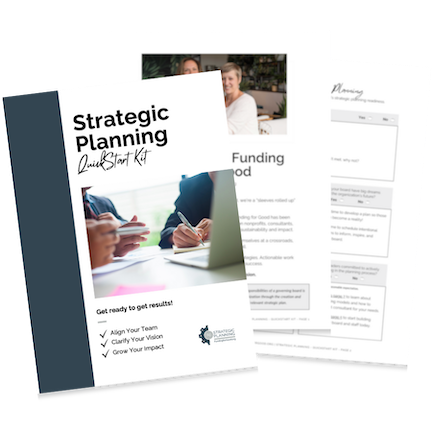In the business world, smooth staff transitions are expected. However, many nonprofits find themselves floundering during these processes for a variety of reasons:
Whether we like it or not, smooth staff transitions are not always a reality. Most nonprofits are so busy responding to community needs that we tend to neglect the internal needs of the organization. Staff development, evaluations, and recognition tend to get put on the back burner.
Leadership should make it a priority to evaluate each staff position and the individual who is filling that position. During this process is important to ask several key questions.
Does this employee:
- Wear lots of hats that will negatively impact multiple departments if they are absent?
- Complete the majority of tasks related to daily operating? (scheduling, mail runs, calls, filing, administrative duties)
- Possess a unique skill set that cannot easily be replaced?
- Assume a primary role in development/fundraising efforts?
- Track and/report key program or organizational data? (for grants, board reports, community impact reports, etc.)
- Serve as the face of the organization?
- Recruit, mobilize, or supervise volunteers?
- Manage community outreach efforts (website, social media, press releases, etc.)?
- Serve as the “glue” of the organization by inspiring board/staff or stepping in to resolve conflicts?
- Appear as an authorized signer or account manager? (PO Box, phone/internet, bank card, donor software, bookkeeping software, vehicle title, insurance policies, etc.)
It’s also worth considering if an employee so beloved and/or respected in the community that a transition could result in loss of community partnerships or support?
The list above appears quite simple, but within those responsibilities lie countless logistics that simply cannot be addressed adequately if staff transitions don’t begin until an “end of employment” notice has been given. Smooth staff transitions need to be planned well in advance.
Board members and supervisors should prepare to face unexpected challenges but a transition plan goes a long way in reducing the stress, negative impact, and even liability that occurs with staff turnover.
These few simple strategies can ensure that transitions are as seamless as possible:
1. Ensure that every employee’s job description is current and accurately describes the work they are being asked to complete.
2. Work with each employee to establish measurable goals, objectives, and timelines specific to their position.
3. Require that all written/oral staff reports provide specific data that aligns with the outlined goals/objectives/timelines that have been agreed on.
4. Schedule individual conversations with each staff member to listen to their suggestions. Ask them to share any strengths, weaknesses, opportunities or threats that might be associated with their position, program, or project. ASK lots of questions, and LISTEN.
5. Require that all staff complete property check-ins on a weekly or monthly basis. This includes physical and intellectual property. ALL work product should be backed up on an external hard drive, secure server, or other approved space. While administrators may use software or computers that back up information as it is entered, many program staff tend to take notes on phones or use personal laptops or thumb drive to complete work. This can present a multitude of problems ranging from privacy concerns to restricted access to the organization’s intellectual property if a staff member is sick, away, or transitioning out of the organization!
6. Cross-train a few members of your team. Dedicate time each month to engage supervisors, qualified board members, or volunteers, in the day to day activities of staff. This does NOT mean micromanage or follow staff around like a puppy! This is an intentional orientation process to ensure that several members of the organization have a working knowledge of the day-to-day tasks that each staff member address.
7. Create a succession plan. If you have a large team, it might be wise to evaluate who might be a natural successor for key positions and begin grooming them for that role. If you have a small team, you might explore sub-contract options that you could access to ensure specific projects are completed in the interim. For example, if your Executive Director happens to complete most or all of your development/fundraising, consider interviewing qualified nonprofit development consultants who can assist with some of those tasks until the position is filled. Board members could also step up for orientations and capacity building initiatives so that they are equipped to fulfill some administrative tasks during the interim.
8. Define and Distribute your staff transition policies and procedures. It’s important that staff members understand how and when they should notify the organization about their intentions to resign and they know what to expect from the organization if they are going to be fired or laid off.



